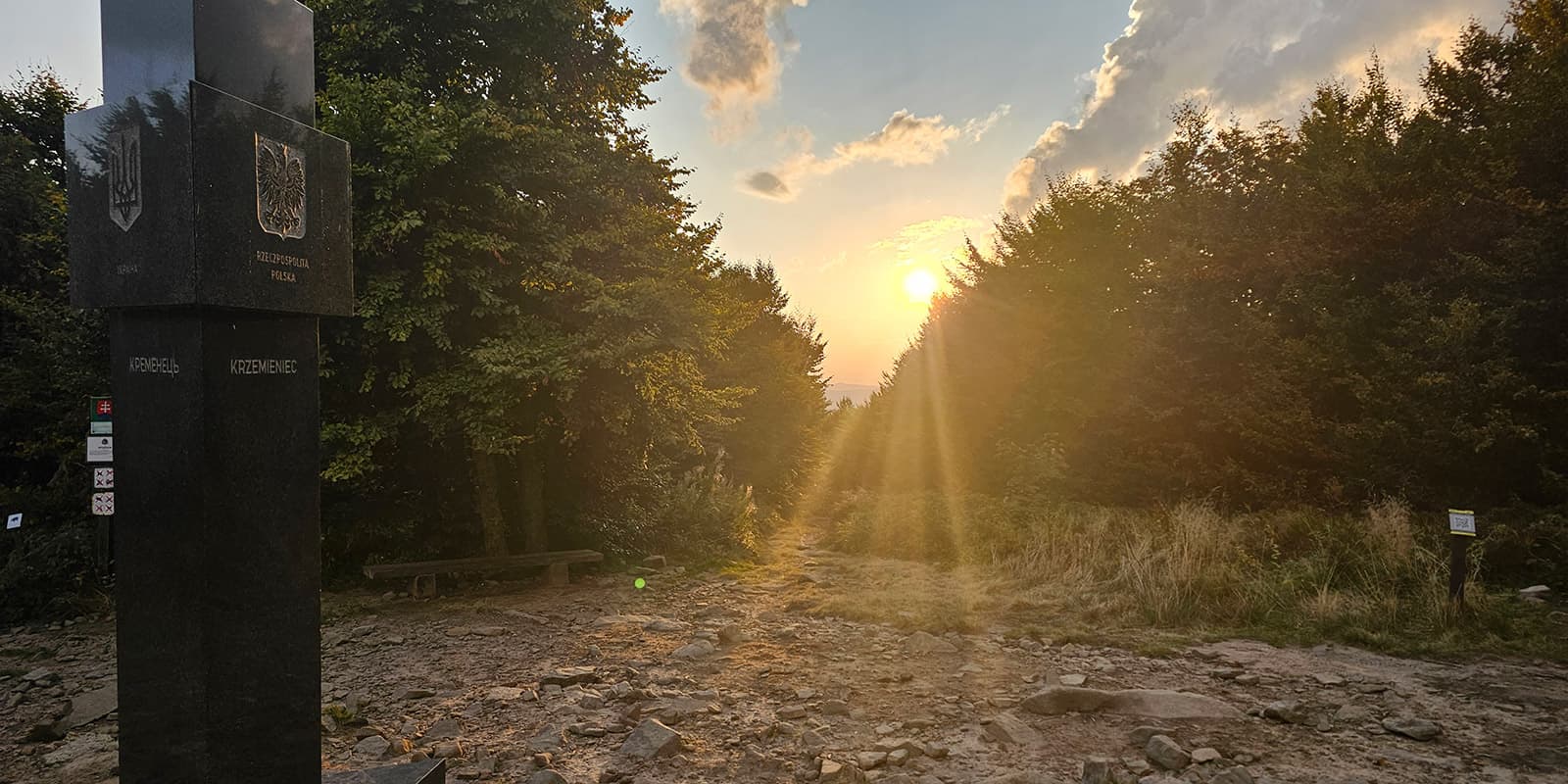In the village of Ustrzyki Dolne, you can restock and recover a bit before heading to the southeast corner of Poland onto the trail’s highest parts. All the climbing will be worth it: this mystical mountain area, called Bieszczady, brings you amazing mountain meadows and impeccable views. Here you’ll be on the highest point of the trail; Bukowe Berdo (1311 m) or Tarnica (1346 m) if you go for the summit.
The Carpathian Trail then leads you down to Ustrzyki Górne, a small but popular village, as it is the gateway to Bieszczady’s most impressive area. Here you will cross the Main Beskid Trail, Poland’s longest trail. You’ll also be able to stock up before you go all the way up again to Krzemieniec (1221 m): the point where three countries meet: Poland, Ukraine, and Slovakia. It will be hard to get lost in the upcoming stages. If you miss a trail mark, the many border posts will show you the way, as you will be walking on the border for quite some time. Mostly in the forest, but you’ll find that the panoramic view of Riaba Skała compensates for the monotony. In this section, you will travel back in time to the historic Balnica railway station, which has had a train in operation since 1898, and in Łupków where you can stay overnight in Schronisko na Końcu Świata: ‘the hut at the end of the world.’
Now you will enter the last mountain area, Beskid Niski. These stages are filled with military history with many defenses from the late 18th century, still visible as pits and ditches along the route. There are also uninhabited villages from the Wisła operation and many cemeteries and monuments from the First World War.
On the last stages, you will pass the lake of Klimkówska, one of the artificial but charming reservoirs in the Carpathian Mountains. One more climb to the top of Chelm, a look over the landscape to say goodbye, and you’ll finish the Szlak Karpacki in the small village of Grybów.
















